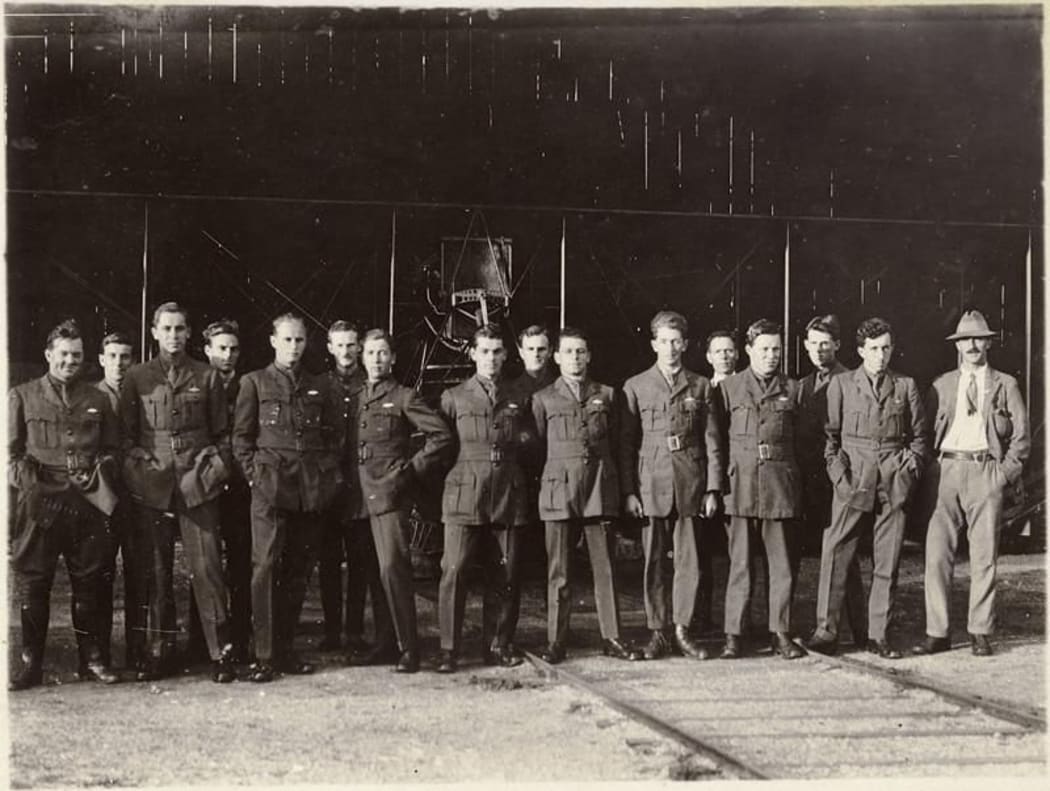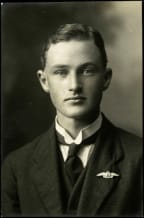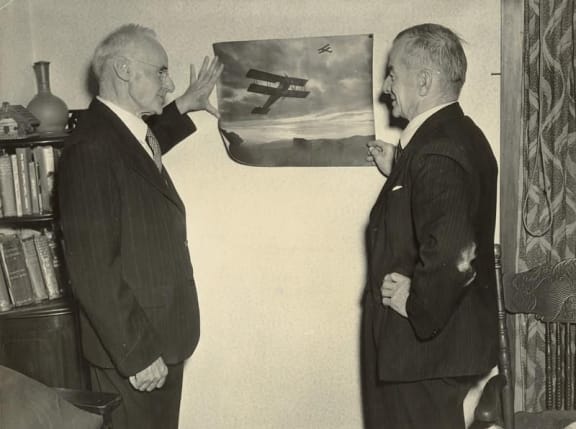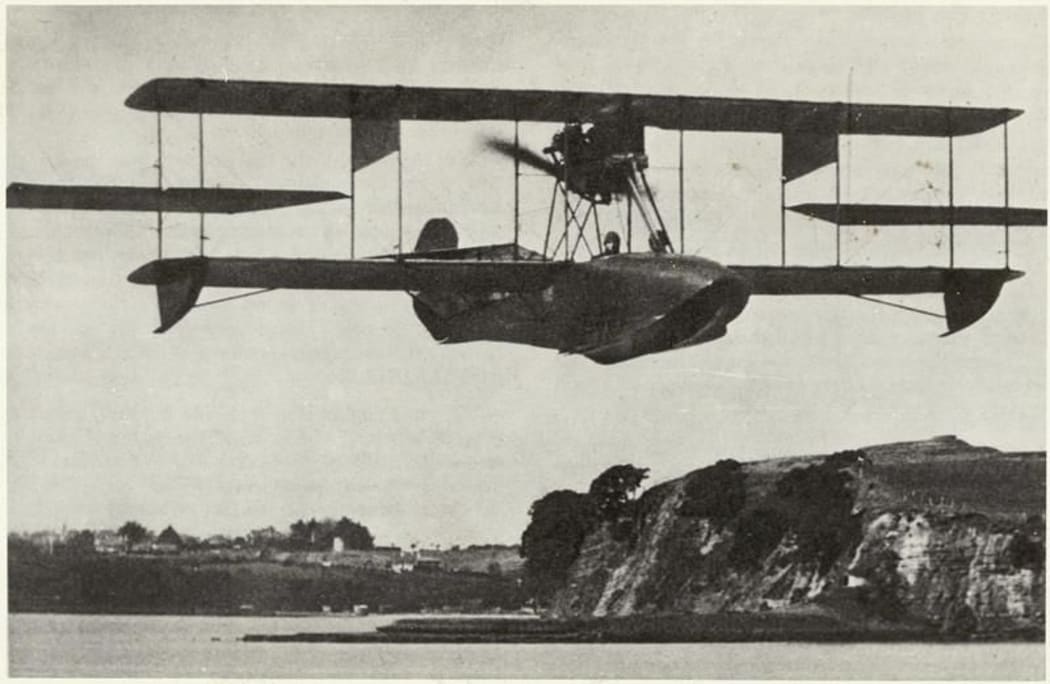They were young, and after adventure .
Malcolm Anderson,MOTAT's General Manager, Museum Experience.

15 Flying School pilots in NZFS uniform standing in front of a plane in a hangar. Photo: Walsh Memorial Library, The Museum of Transport and Technology (MOTAT)..jpg
Auckland’s Museum of Transport and Technology is going high-tech to trace the histories of dozens of pilots who trained at New Zealand’s first flying school in Auckland. Most of them then went off to fight in World War One and some didn’t come home.
At the start of World war One, aircraft were very basic and crude. By the time war had ended, planes had become far more sophisticated and morphed into fighters, bombers and long-range bombers.
In 1915 the young New Zealanders who enrolled in the Walsh Brothers Flying School were initially using planes put together by the brothers themselves. The Walsh boys opened their School in 1915 at Kohimarama on the beach front of the Waitemata Harbour. Over the following war years more than 100-young men learned to fly there. Eighty three of those qualified for the Royal Aero Club certificates and more than half of them went on to the see active aerial combat in Europe.
MOTAT inherited the photos and documents of the flying school, and now its set up a new website called “First of the Few”, about the graduates. What’s missing is a lot of biographical detail about each of the men who learned to fly. You can go see for yourself, who’s there and what’s missing.
I did a quick check and a bit of on line research and found that at least five of the men were killed in Europe. Trevor Dudley Hall Alderton and John Leask Foubister were killed in accidents in England. Frederick James Sharland, Albert William Gordon and William George Mitchell all died in action, or from their wounds.
But there seems to be so little on line about many of the men who came home and lived full lives.

Studio portrait of Gordon Alfred Eliott, c.1918 Photo: Walsh Memorial Library, The Museum of Transport and Technology
For instance, the website doesn't have much on Gordon Alfred Eliot. All it has so far is his flying certificate number, and his date of graduation from the Walsh Flying School.
So I did a bit of googling myself and discovered that the British National Archives have a record of the birth of a fellow called Gordon Alfred Elliott in 1897. Oooh! So he would've been 19 or 20 years old in 1917, when he enrolled in the Walsh School. What's more, the UK records tell me that its young Elliott flew for the Royal Air Force in 1918 and 1919. Oh, but wait. The spellings of the surname are different. Too bad, different guys.
But it would be nice to know what happened to our young Gordon Alfred Eliott wouldn’t it?
MOTAT's General Manager, Museum Experience, Malcolm Anderson says "If you look at the photographs, many of the them are very, very young. They saw the opportunity simply to go off on an adventure".
MOTAT wants to enthuse any descendants of these men to take a look at website, supply basic missing information and some bio material. The Museum’s also now developed a new education programme to get school kids involved and it’s building a hands-on digital display to encourage more participation.

Leo and Vivian Walsh, 1940s Photo: Walsh Memorial Library, The Museum of Transport and Technology
None of this would have happened of course without the work of the Walsh Brothers, Leo and Vivan, two English-born engineers who lived in Auckland. In 1910 they bought materials in from overseas and instructions on how to build their first aeroplane. That took them five months, with help from their sisters Veronica and Doreen who sewed together hundreds of yards of material for the wings.The plane called “Manurewa” first flew in February 1911. After that there was no stopping them.
Julie Baddiley is the Strategic Learning Advisor at Motat. She’s helped develop a new research lesson for students based on the flying school and its graduates. The research initially concentrates on one of the school’s most notable sons, Keith Logan “ Killer“ Caldwell CBE, DFC and bar who shot down twenty five aeroplanes during the First World War, and then he lived on till 1980. Nothing like a bit of a hero to get kids going!!

Left: Keith "Killer" Caldwell in RNZAF uniform, 1945. Photo: Sir George Grey Special Collections, Auckland Libraries. Centre: Julie Baddiley Strategic Learning Advisor. Malcolm Anderson GM Museum Experience. Photos: RNZ/David Steemson.

Flying School Curtiss flying boat flying above the eastern bays of Auckland Photo: Walsh Memorial Library, The Museum of Transport and Technology

